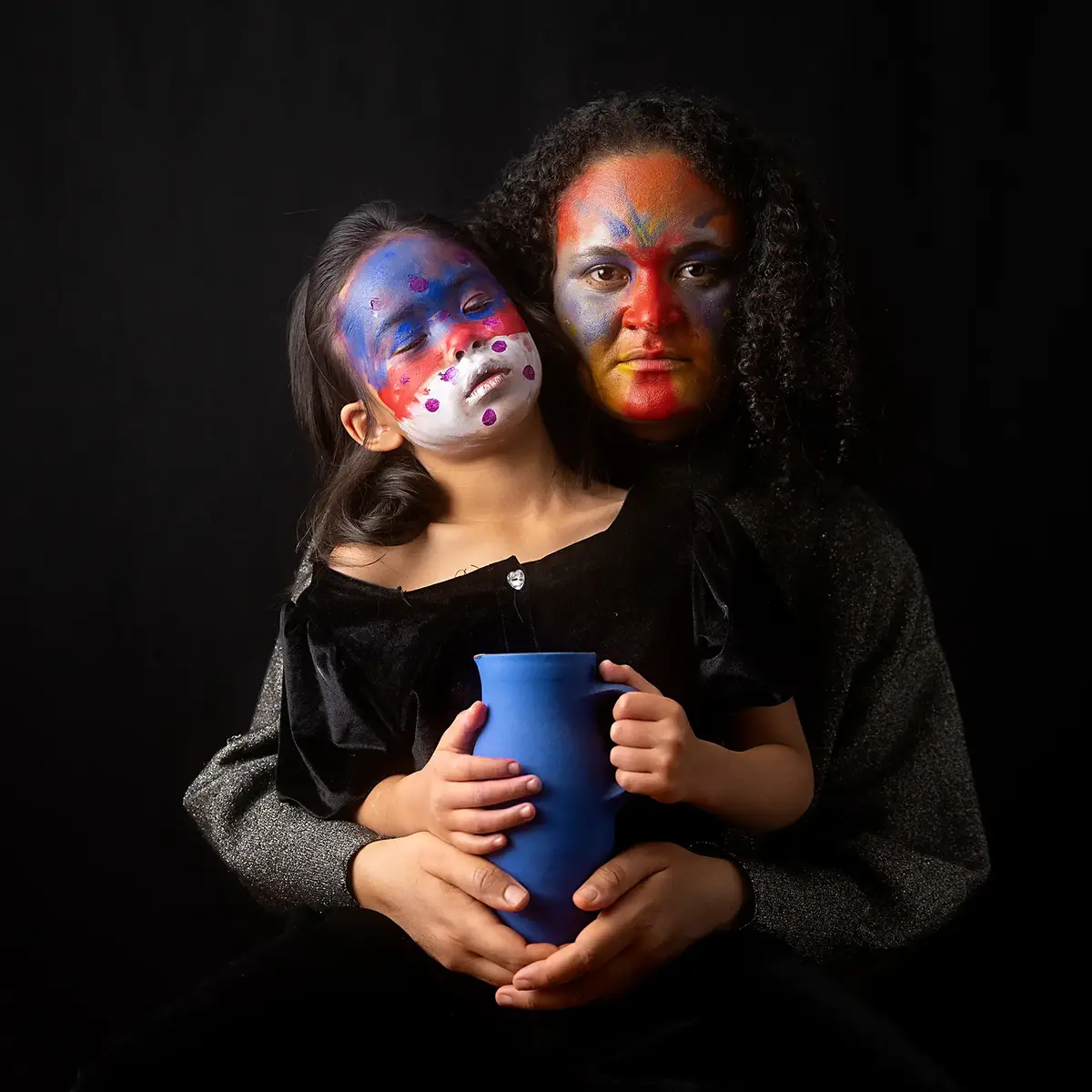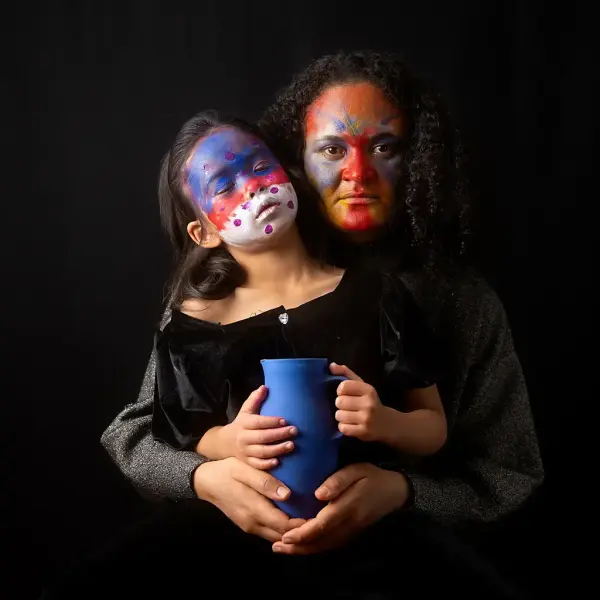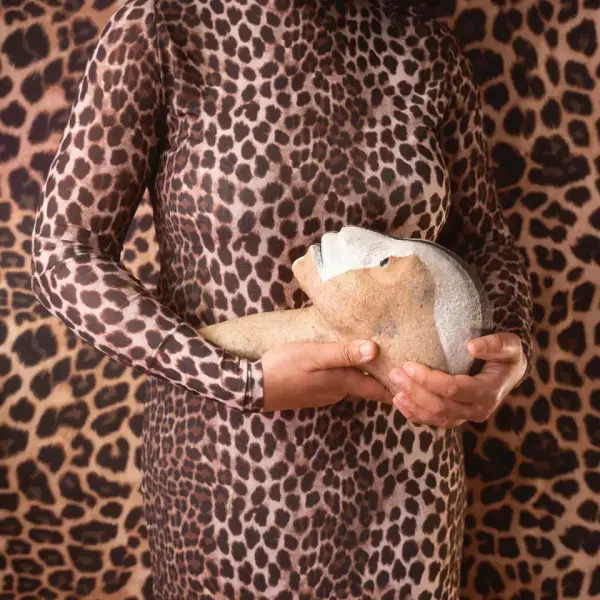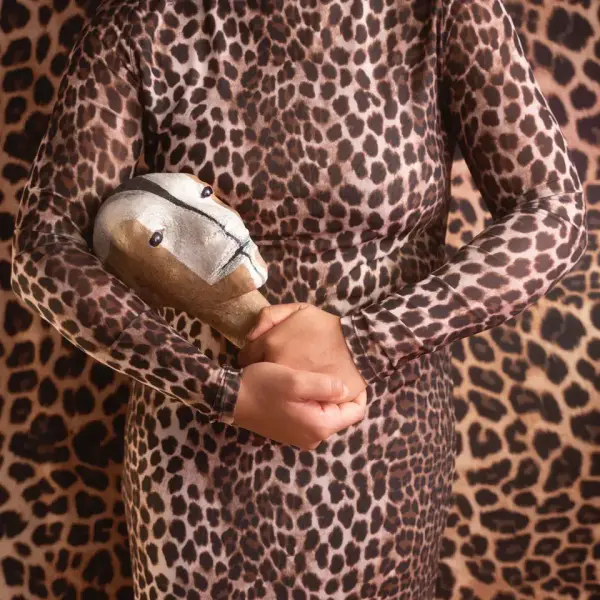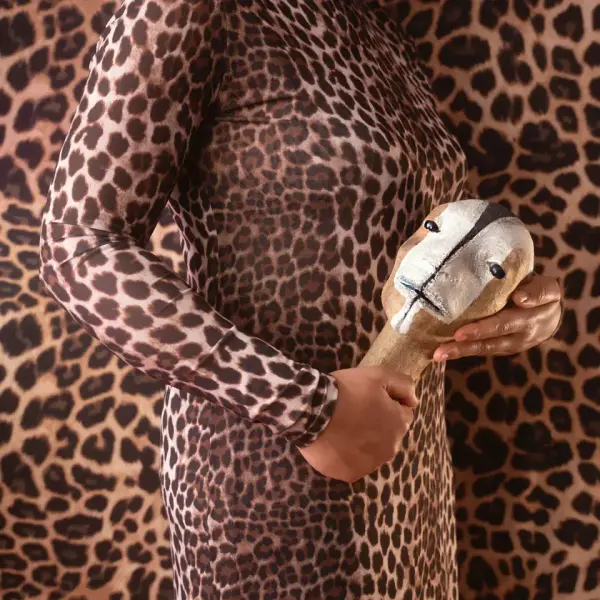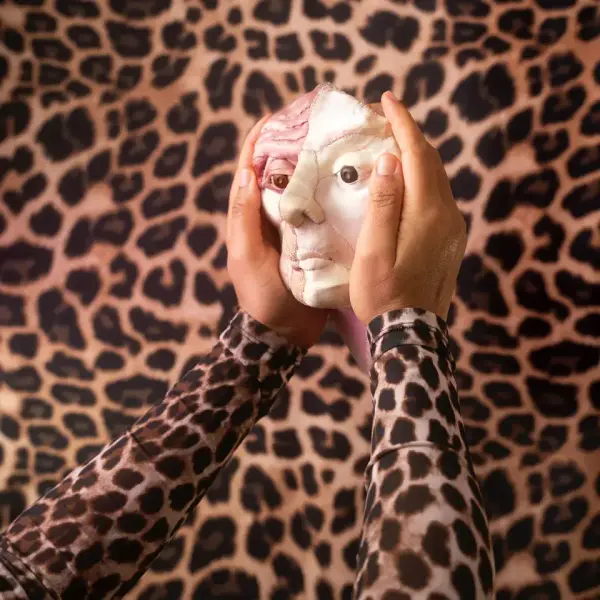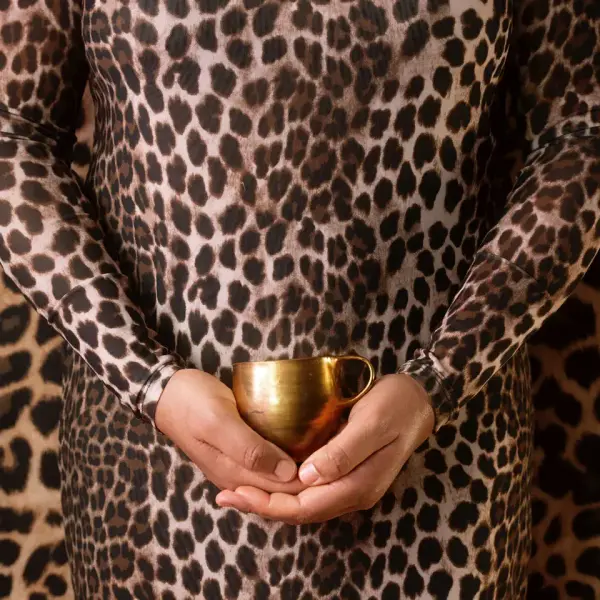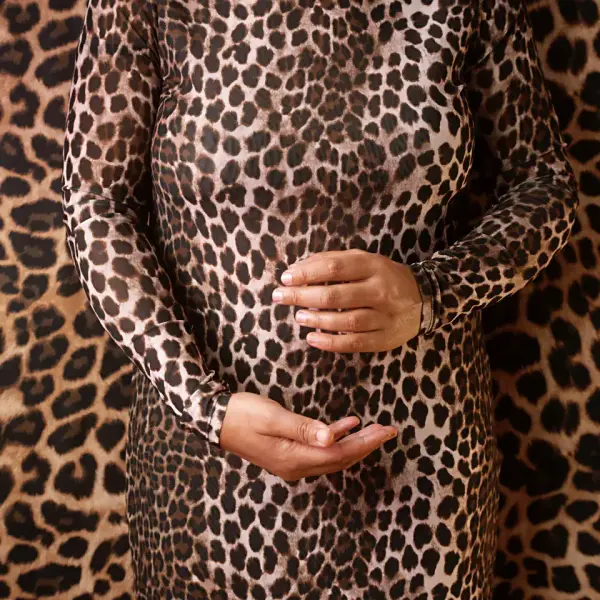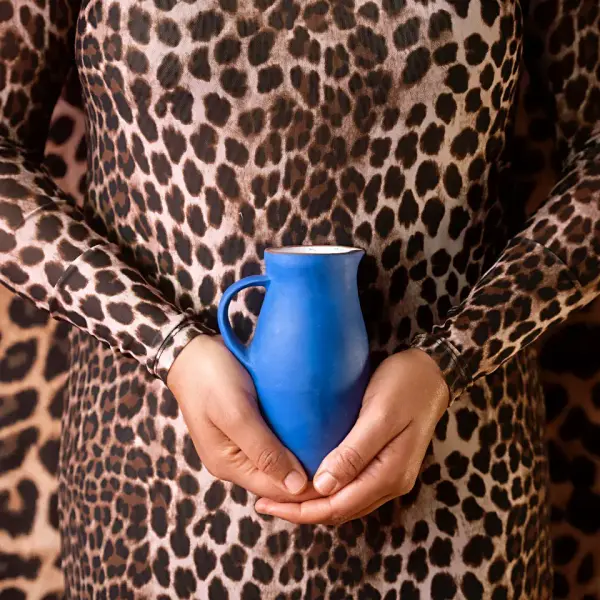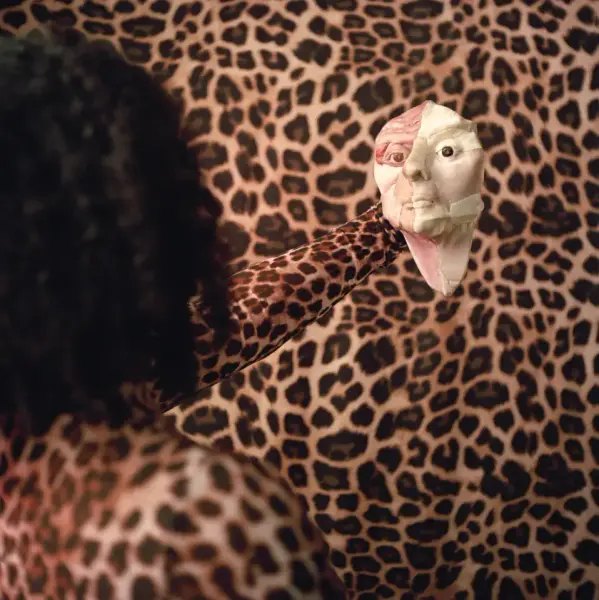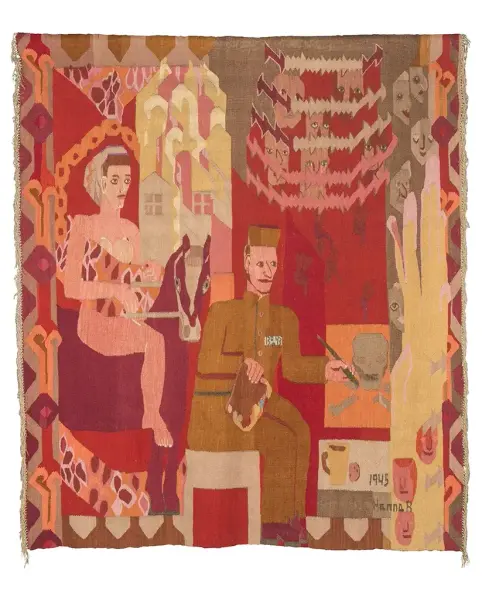Listen to Maritea Dæhlin speak about her artistic practice and the new works featured in the exhibition Passing Motherhood.
Language: English
- 1/1
Duration: 5 min 59 sec.
Maritea Dæhlin
Soft papmaché (Gitte) (1-8); Sorry (Mamá), 2025
photo series, 9 digital prints
50x50 cm each
To Carry a Cup (Lisbet); To Carry (Grandmother), To Carry a Jug (Lisbet), 2025
3 digital prints
55x55 each
Were They Human, 2025
digitalized medium format wallpaper print
Great-grandmothers Dance, 2025
digital print
110x110cm
this is a blue jug, 2025
video
4:09
HENDER (HANDS), 2025
Sound
3:56
Maritea Dæhlin is an artist who works across the spectrum of theatre, photography, video, performance, sound and text. Through fragmentation, repetition and rhythm, she creates ritual and visually striking spaces in which she poses questions about identity, history and tradition.
Dæhlin is a third-generation artist: daughter of visual artist Gitte Dæhlin (1956–2012) and granddaughter of ceramicist Lisbet Dæhlin (1922–2012). When both of her foremothers passed away in the same year, she suddenly found herself in the role of steward of their artistic legacy. It’s hard to imagine the scale and weight of this task: not only the handling of a material bequest, but also the responsibility of managing their artistic legacy into the future.
For the exhibition Passing Motherhood, Dæhlin produces a new cycle of work in dialogue with the artistic practices of her mother and grandmother. She brings her body and voice to the fore, orchestrating the co-presence of her children, along with sculptures made by Gitte and Lisbet, into the works. It manifests a shift of medium in Dæhlin’s practice and is the first photographic work made by the artist. These new works are shown in this exhibition within the exhibition, together with Gitte Dæhlin’s Taken by the Game and a gold cup made by Lisbet Dæhlin.
Using herself and her own body as her material, Dæhlin has long worked with performance, a format that requires her presence in real time. After becoming a mother herself, the need arose to broaden the performance into other media such as sound, text, video and photography — expressions that can ‘perform’ without her actually being physically present in the work. This transition allows her to continue to explore identity, heritage and belonging, while still allowing her the opportunity to be present for her family.
In the exhibition, she posits her art practice within both her mother and grandmother’s material. The new work, This is a blue jug (2025), combines archive footage of her grandmother’s hands, turning clay, with a fictionalized conversation between Maritea, her grandmother and her grandfather, art historian Erik Dæhlin. The video reflects a child’s wondering gaze upon art. In the text HANDS, reproduced in the catalogue, Dæhlin imagines an afterlife conversation with her mother: a seemingly mundane chat that nevertheless touches on big questions about choices, personal costs and what it means to be an artist and a parent.
The photographs shown in Passing Motherhood, including Great Grandmother’s Dance, depict Dæhlin with her daughter Nina, both with painted faces, holding one of her grandmother/great-grandmother’s signature blue jugs. The face painting occupies a liminal space between children’s play and ritual masking; an echo of Gitte Dæhlin’s sculptures in which faces often appear as mask-like forms. Other photographs show Maritea wearing a leopard print, posing with various objects from her mother and grandmother’s bodies of work: papier-mâché and textile sculptures, as well as ceramics, including a gold cup that Dæhlin uses daily. The leopard pattern is omnipresent, challenges the viewer, and can be interpreted both as a superficial consumer product and an animal mask. It is a transgression of human and animal boundaries that echoes something similar in Gitte Dæhlin’s sculptures, and it is a recurring theme in Maritea’s work.
Through the new body of work, Maritea Dæhlin weaves together experiences and idioms of several generations, across continents and art forms. The works reflect how she takes ownership of her own identity and history, while at the same time bringing the heritage of her familial foremothers into a new artistic landscape. The result is an expanded self-portrait, with an emphasis on the expansion of the concept of the “self”; an exploration of identity that is in living dialogue with parents, children, and the ritual space between present and past.
- Marianne Zamecznik

Photo: Signe Fuglesteg Luksengard
Maritea Dæhlin (she/her, b.1986, Oslo) is an interdisciplinary artist. Her work, encompassing video, performance, photography, sound, and text, is deeply influenced by shifting geographies, histories and contexts. She studied Devised Theatre with Digital Arts at Dartington College of Arts, England (2007–10). Recent exhibitions include: Sleep Locks the Bones, Kunstnernes Hus, Oslo, 2024; Voicing Out Silences, Livingstone, Zambia, 2024; Community Over Clout, Association for Visual Arts, Cape Town, 2024; Originally a plant (performance), Black Box theatre, Oslo, 2022 (2022–2023 also shown at: Les SUBS, Lyon; RAS, Sandnes; Grenland Friteater, Porsgrunn; and SPILL festival, Ipswich). She is the daughter of sculptor Gitte Dæhlin, and granddaughter of ceramicist Lisbet Dæhlin. She lives and works in Norway and Mexico.
Production credits
Maritea Dæhlin, Soft papmaché (Gitte) (1-8); Sorry (Mamá); photo series, 9 digital prints, 50x50 each, 2025
Camera: Pablo Rojo
Assistance: Soh Tokunaga
Thank you: Studio Technika, Nordic Black Theater, David A. Lunde, Jarl Solberg og Anne Beate Hovind
Maritea Dæhlin, To Carry a Cup (Lisbet); To Carry (Grandmother); To Carry a Jug (Lisbet), 3 digital prints, 55x55 each, 2025
Camera: Pablo Rojo
Assistance: Soh Tokunaga
Thank you: Studio Technika
Maritea Dæhlin, Where They Human, digitalized medium format wallpaper print, 2025
Camera: Pablo Rojo
Assistance: Soh Tokunaga
Maritea Dæhlin, Great-grandmothers Dance, digital print, 110x110cm, 2025
Camera: Pablo Rojo
Assistance: Soh Tokunaga
Thank you: Nina
Maritea Dæhlin, dette er en blå mugge (this is a blue jug), video, 2025, 4:09
Video features archival footage of Lisbet Dæhlin.
Video editing: Maritea Dæhlin
Text: Maritea Dæhlin
Sound recording and sound editing: Truls Hannemyr
Maritea Dæhlin, HENDER (HANDS), 2025, 3:56
Sound: Rio og Maritea Dæhlin
Sound recording and sound editing: Truls Hannemyr
